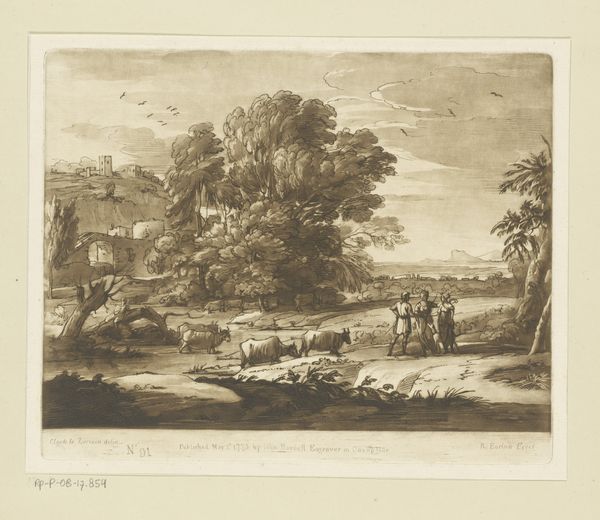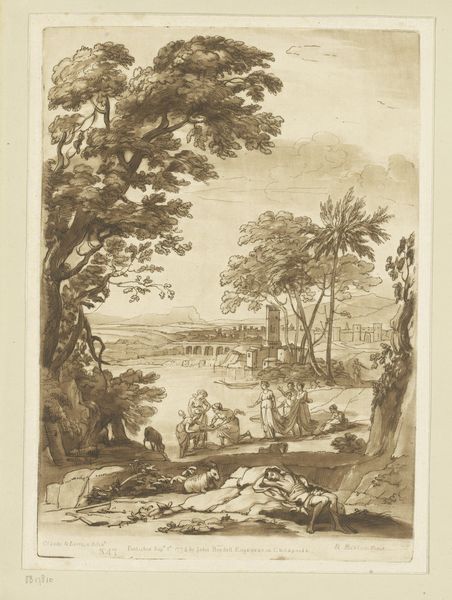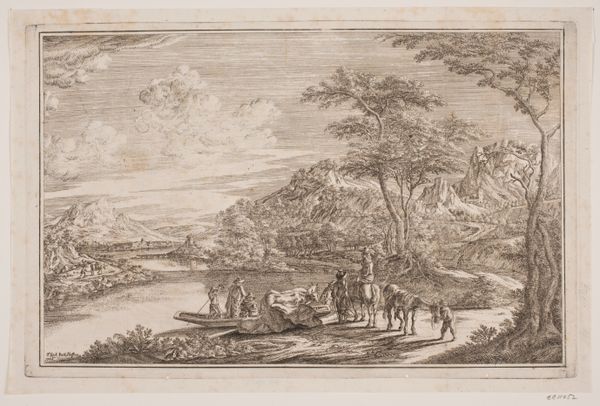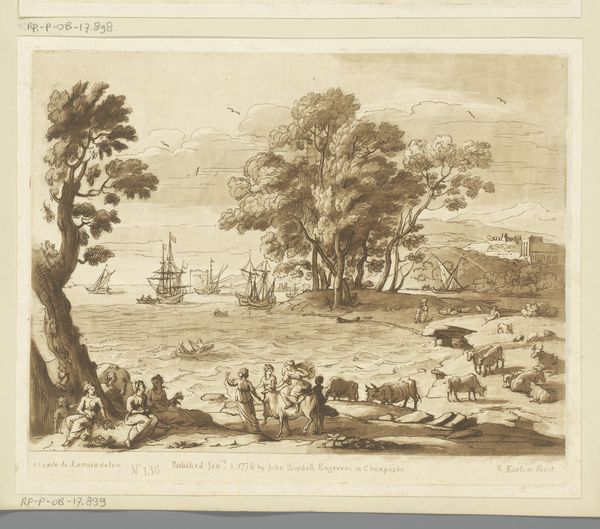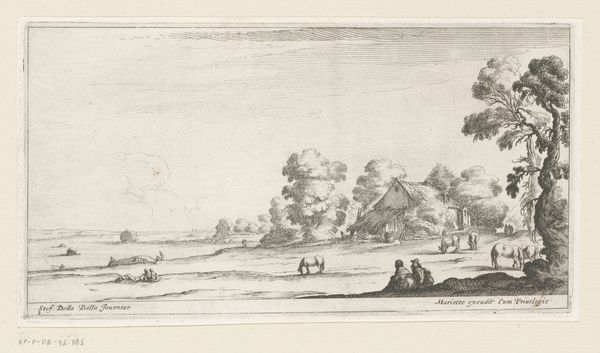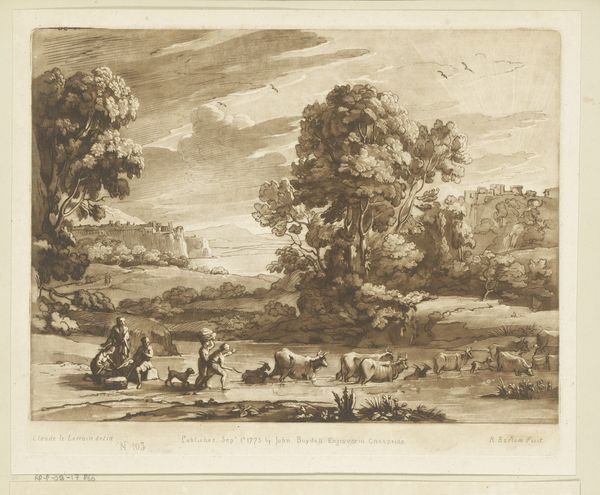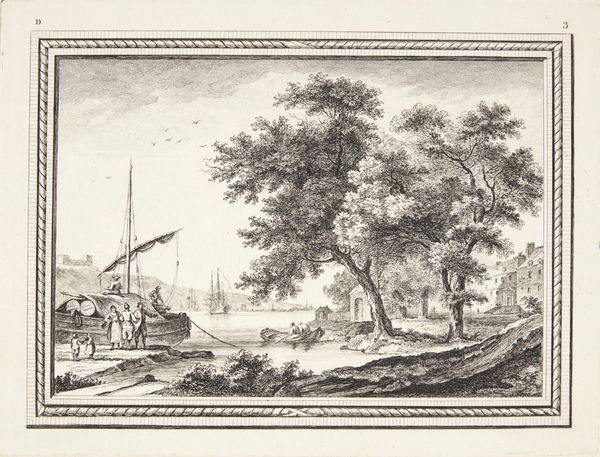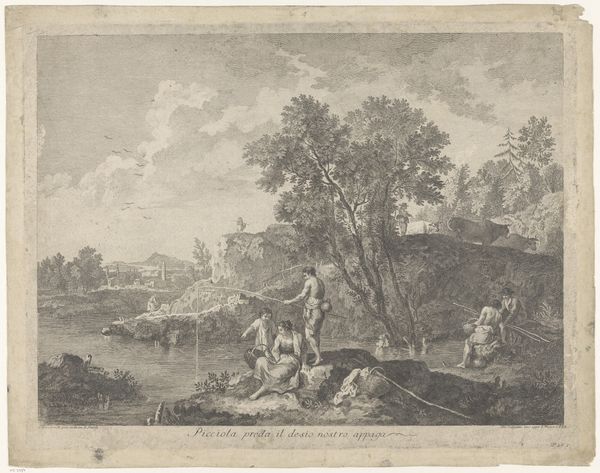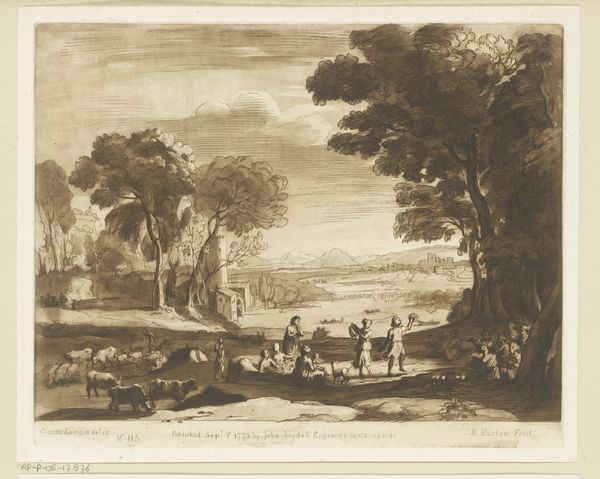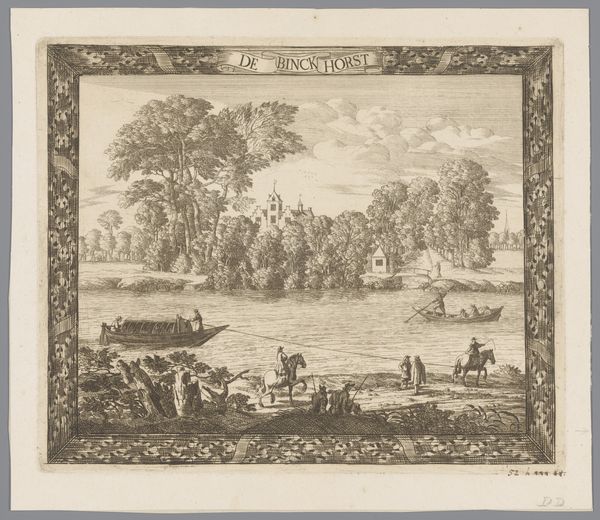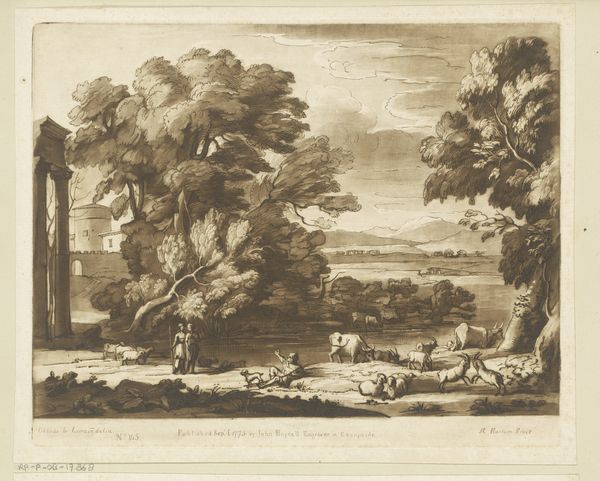
drawing, print, engraving
#
drawing
#
animal
#
neoclassicism
#
ship
# print
#
human-figures
#
landscape
#
human
#
history-painting
#
engraving
Dimensions: sheet: 9 13/16 x 15 7/8 in. (24.9 x 40.3 cm) plate: 8 1/8 x 10 1/4 in. (20.7 x 26 cm)
Copyright: Public Domain
Editor: This is "Rape of Europa," a 1776 engraving by Richard Earlom. It's currently held at the Metropolitan Museum of Art. The scene, rendered in sepia tones, has an ethereal, almost dreamlike quality. I'm intrigued by the landscape and the way the artist has arranged the figures within it. How do you interpret this work, focusing on its formal qualities? Curator: Formally, the composition presents a study in contrasts. Note how Earlom orchestrates the arrangement of figures across the picture plane, creating distinct groupings, that pull the viewer’s gaze in alternating paths. The figures sitting under the tree on the left compared with the ox and her rider, as well as how the landscape seems to open in the center, guiding us toward the distant ships. Editor: So the division emphasizes movement and depth? Curator: Precisely. And what do you observe regarding the line quality and tonal range? Editor: The lines are delicate, creating soft forms. And there's a limited, though effective, tonal range, almost monochromatic, that unifies the scene. Does this serve a specific purpose in your analysis? Curator: Consider how this engraving renders form; the subtle gradations give volume to both organic and constructed form in the boats, figures, and architecture. This manipulation serves to portray atmosphere while unifying what could otherwise feel a disparate series of forms in conflict with one another. The emphasis on line and the strategic use of light construct not merely an image, but an allegorical scene. The choice to forgo bright colors allows for focus to remain on these specific features, wouldn’t you agree? Editor: I see your point! By focusing on these intrinsic formal elements—the arrangement, line, and tonality—we can read the piece in terms of motion, tension, and pictorial harmony. Thank you! Curator: Indeed! Analyzing how these formal properties function together is vital. By carefully looking and critical analysis, we uncover a wealth of formalist interpretation.
Comments
No comments
Be the first to comment and join the conversation on the ultimate creative platform.
